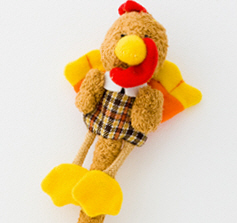How to Teach a Perfect Thanksgiving Lesson


When teaching English in a country where English is not the native language, students will often be interested in the cultural differences between their country and English speaking countries. Holidays are a great opportunity to teach students about other countries or to create holiday themed activities. For very young students, drawing a turkey based on tracing one’s hand and teaching them the word turkey may be as far as you get in a Thanksgiving lesson. For beginning students, some Thanksgiving related vocabulary and matching exercises may be appropriate. The lesson described in this article can be adapted for different levels but is structured for classes of intermediate and advanced students.
Warm Up
Any common warm up or review activity would be appropriate prior to a holiday lesson however you can also use this time to see what your students know about the holiday you plan on discussing or about the countries that celebrate it. If you are from the United States, ask you’re students if they know where you are from and maybe talk about what the weather is like there this time of year.
Introduce
Asking your students “Do you know what day it is today?” or “Do you know what holiday is on November 25th?” will get them thinking about the date. Thanksgiving is not celebrated in most parts of the world so you can tell your students some fun facts about Thanksgiving and how it is celebrated in the United States. For example, you can explain that the date changes but it is always on Thursday. If you are more familiar with the Canadian Thanksgiving, teach your students about that instead.
Listening
Conducting a listening exercise where students answer true or false or multiple choice questions will give you the opportunity to read a passage about Thanksgiving that is appropriate for your students. Things such as popular foods, traditional activities, and simplified historical facts would be good pieces of information to reveal at this stage.
Vocabulary
Most holidays come with new vocabulary. Giving your students an extensive history lesson would not be appropriate for most levels but giving them certain vocabulary such as turkey, pumpkin pie, celebrate, etc would be beneficial. Advanced students could also handle vocabulary such as Native Americans, Pilgrims, etc and be given slightly more background on the holiday. On the same worksheet used above, you can have a matching exercise where students match new vocabulary with images. You can also use Thanksgiving borders to help convey the message. Assuming you used all the new words in the reading passage, students should be able to guess the meanings of words based on their context.
Practice
Use a practice activity to combine what students are learning with your holiday. If you have recently studied the structure “I like to…” have students write a few sentences about foods they like to eat. Then have students work in pairs. Students can take turns asking and answering “What do you like to eat?” If you have recently covered degrees of comparison, have students rank Thanksgiving foods in order of how much they like or think they would like them. Then they can practice making sentences similar to “I like pumpkin pie the most.” or “I like pumpkin pie more than turkey.”
Produce/Discussion
You can ask your students if they have any holidays similar to Thanksgiving or if some of the activities or foods are similar to holidays they celebrate. Conduct a short activity where students can discuss Thanksgiving, other holidays, and ask questions.
Create
Often as children we have certain craft activities associated with holidays too. Even if it is not appropriate to conduct these craft activities in your classroom, your students may be interested in them. At the end of a Thanksgiving lesson you can tell students what your favorite part of Thanksgiving is or tell them Thanksgiving related activities you remember doing as a child. If you have no first hand experience with the holiday, you can still tell them what your favorite traditional Thanksgiving food is or tell them about a craft activity children would do on or around Thanksgiving.
Students often enjoy learning about holidays and how they are celebrated. Giving cultural lessons such as this one will help break up the monotony of grammar structures and ESL topics while still practicing structures you are teaching in normal lessons.
View Thanksgiving worksheets and free lesson activities on BusyTeacher.org.